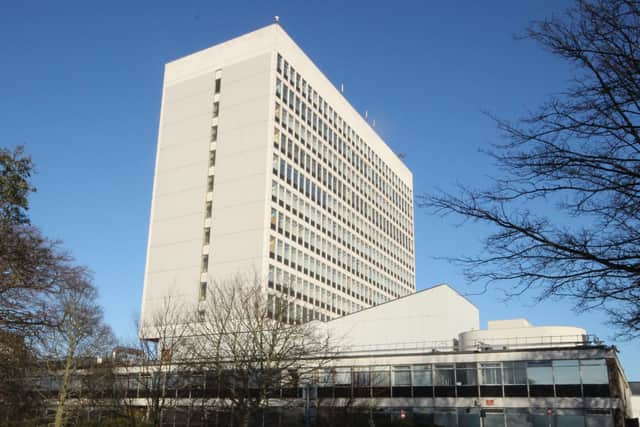‘Surprise’ as hospital's 1960s tower block gets listed building status
The tower at Victoria Hospital in Kirkcaldy is considered to be one of the first examples of high-rise hospital architecture in the UK and has been given Category B status.
In addition, the earliest block in the hospital redevelopment, which was built in the late 1950s, has been given Category C status given its breakthrough design in concrete and glass.
Advertisement
Hide AdAdvertisement
Hide AdTogether, the Modernist buildings reflect the substantial social and economic changes experienced in mid-20th century following the introduction of the Welfare State, Historic Environment Scotland (HES) said.
Dawn McDowell, Deputy Head of Designations at HES, said: “The post-war period saw a shift in hospital design in Scotland, whereby Modernism in architecture sought to directly equate with improvements in health care.
“The two phases of buildings at Victoria Hospital are significant examples of this Modernist design ethos, through which we can gain an insight in to the changing attitudes in medical treatment and patient care that were occurring at the time. As significant examples of their building type, style and period, they have now been added to Scotland’s List of buildings of special architectural and historic interest.”
David Stewart, former NHS Fife executive director who oversaw the 2012 development of a £170m extension to the hospital, said he was “surprised” at the listing of the tower block.


He said: “I am surprised it has been listed as it is not usual for tower blocks to be listed, in my experience. With listings come restrictions and I wouldn’t want any of these buildings to be restricted from any future development. These buildings are never finished, they are always being updated, and I would be disappointed if any future NHS development was restricted as a result of the listing.”
The earlier building, known as the Phase I block, was the first building to replace the town’s original orthopaedic hospital, which was built in the late 1860s and featured old fashioned circular wards. The new Modernist style was a radical departure from traditional building materials and methods.
HES said the block represented a new style of hospital building that emerged in the early post-war period which was based on a design philosophy of science, function and open-ended planning.
The canopied roof deck is of particular interest given it is a rare surviving example in Scotland.
Advertisement
Hide AdAdvertisement
Hide AdThe Phase II block, made up of the tower and podium, was built between 1962 and 1967 and is one of the earliest examples of high-rise hospital design in both Scotland and the UK.
HES said both buildings also illustrated rapid changes to hospital design from the mid-1950s to the mid-1960s.
Neil McCormick, Director of Property and Asset Management at NHS Fife, said: “We take great pride in the rich history of innovative design and development at the Victoria Hospital site in Kirkcaldy.
“Over the years the use of our hospital buildings has evolved greatly, with them being redesigned and repurposed to reflect the changing demands of best practice in modern healthcare.
“The listing of Phase I and II of the Victoria Hospital allows us recognise the rich history of these buildings and retain the external modernist design, while still enabling us to continue to evolve the buildings internally to ensure they remain fit-for-purpose.”
